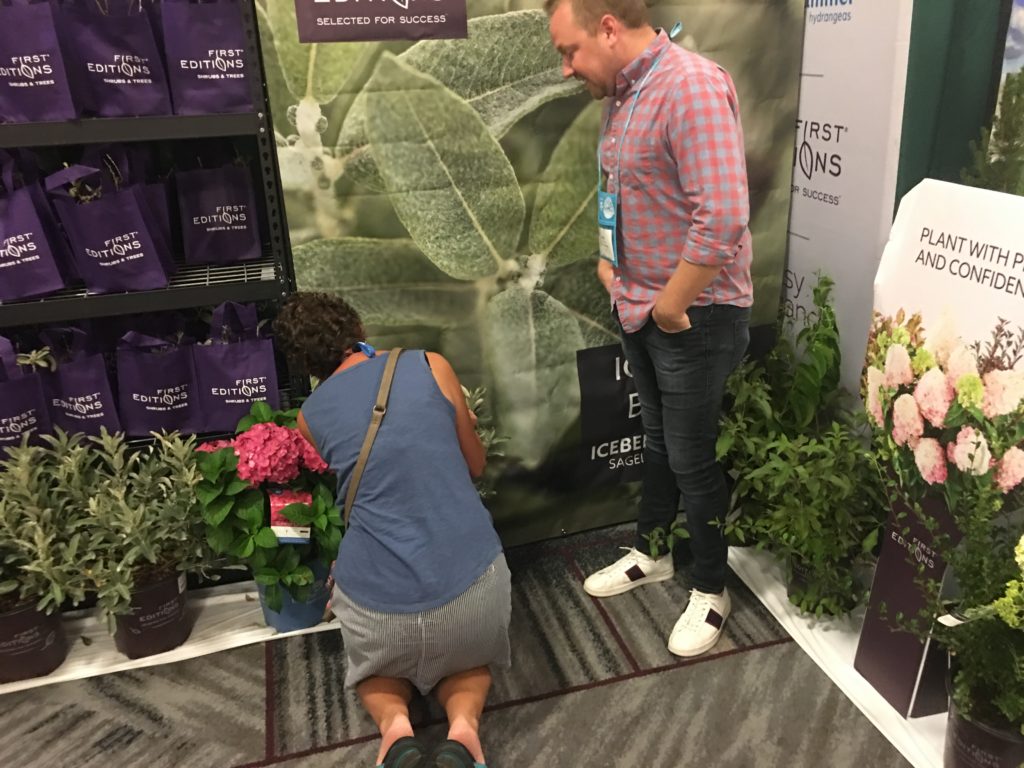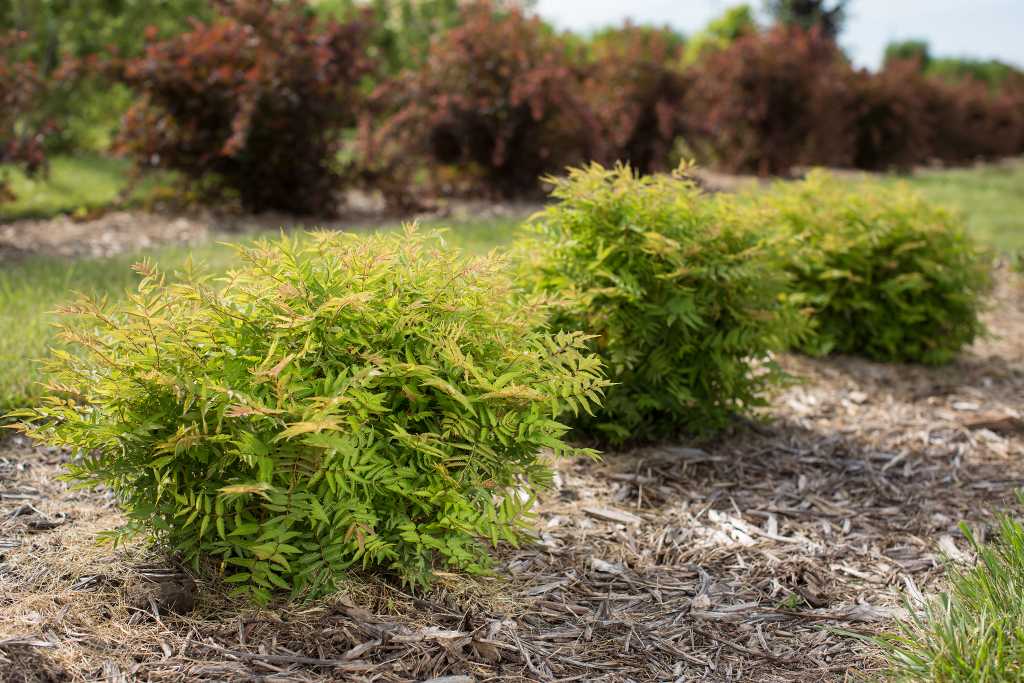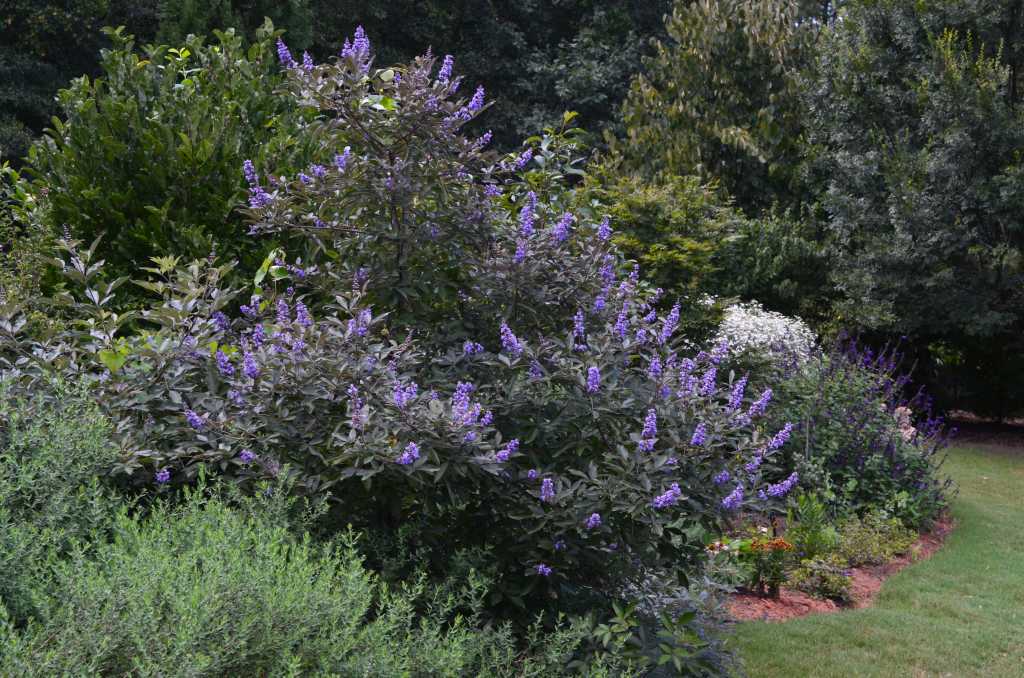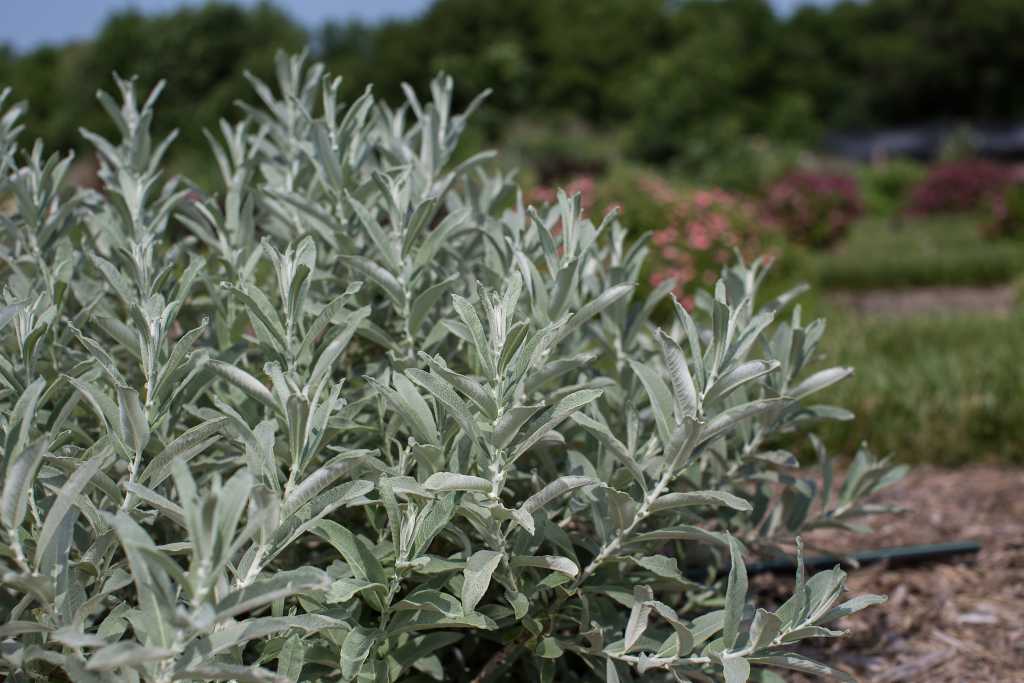New Year – New Shrubs!

It's cold, wet, and windy here in Seattle today – but that doesn't stop me dreaming about warmer days in the garden and planning the inevitable revisions. Since I suspect you're doing a little armchair gardening too, here are some new shrubs I've come across that you might like to consider.
Shrubs are the mainstay of my garden designs – especially those with outstanding foliage, as they are typically lower maintenance than herbaceous perennials yet offer both color and structure. Bonus points if they bloom too!
Here are five on my wish list this year (including a couple on the 'if-I didn't-have-deer-list').
Iceberg Alley Sageleaf Willow (Salix candida 'Iceberg Alley")

Some plants simply demand up-close attention! Ryan McEnaney, PR specialist with First Editions, is no longer even surprised when I get excited about cool foliage!
This silver-leafed beauty had me on my knees – literally!! I was at the annual symposium of GardenComm and saw this at the trade show booth of First Editions. I had to get down and pet it (the leaves were soooo soft and velvety)- then photograph it. And yes I brought one home with me but will have to site it carefully as the deer like willows of all shapes and sizes.
Iceberg Alley sageleaf willow is an exciting native plant with a mounding form that is hardy to zone 2! In spring the silver catkins have red stamens and like most willows this will tolerate wet soils. It grows best in full sun and tolerates pruning but if left alone it will grow 3-6' tall and wide.
Consider pairing this with darker foliage shrubs such as a ninebark (Little Devil, Coppertina, Ginger Wine and Fireside would all work well), perhaps under-planted with something in golden yellow (golden oregano or Angelina sedum would work if the soil wasn't too wet).
Hardy to zones 2-6.
Matcha Ball® Ash Leaf Spirea (Sorbaria sorbifolia 'Matcha Ball')

Tested for several years already, Matcha Ball is holding a tidy shape. Photo courtesy; First Editions
I've had a long-distance relationship with the Sorbaria genus- until now. I've liked it – in other peoples gardens, but it was an absolute THUG when let loose as it sent out endless suckers. I've used it in containers with fair success although the variety 'Sem' seemed to get rather gangly like a fast-growing teenager. Yet that foliage was temptingly swoon-worthy….
So when I heard about this new variety, Matcha Ball introduced by First Editions, my curiosity was more than piqued. The fern-like foliage is a lovely shade of acid-green with a hint of lemon in summer, and yellow in fall. When the leaves first emerge in spring they have a pinky-peach hue to them which is really pretty and invites all manner of fun combinations. Unlike Sem, this variety blooms sparsely if at all – one of the reasons it keeps a much tighter mounding form than its predecessor. Mercifully, and perhaps its greatest virtue of all, it doesn't sucker!
Growing to just 2-3' tall and wide in zones 3-7, I could see using this as an edging plant for a border or as an alternative to golden spirea or dwarf barberries. I'm going to test it for deer-resistance and let you know as it isn't currently listed on the Rutgers site.
Tianshan® Seven-son flower (Heptacodium miconioides 'Tianshan')
Don't you just love it when you've got the perfect excuse to try something you've always secretly coveted?! I've always fancied trying Heptacodium in my garden both for the fragrant, late-season blooms (which the bees and butterflies enjoy) and fascinating purple-red fruits that appear in fall. The exfoliating bark also helps to offset the fact that truthfully the foliage itself isn't terribly special although the yellow fall color is pretty. Thing is, the species is quite hard to find in nurseries, and the few that I have come across had something of a Charlie-Brown attitude which made me wonder if it would grow out of its awkwardness or not.
Enter Tianshan. This multi-stemmed shrub has a more compact habit with an anticipated size of 8-12' tall and just 5-7' wide. It is better branched than the species – so none of those awkward long shoots.
Be sure to gradually limb this shrub up to reveal the bark and try it as a specimen plant or as an informal hedge. Hardy in zones 5-9 and thrives in full sun-partial shade. I'm going to test this for deer-resistance too!
Flip Side® Chastetree (Vitex x 'Flip Side')

Give Flip Side enough room to spread out so you can appreciate the colorful leaves and blooms. Photo courtesy: First Editions
Now here's one that was actually introduced last year so I've had a chance to test it a little bit. (It will be more widely available in the nurseries this year).
I like chastetrees for their drought tolerance and deer resistance, and although they typically die down to the ground each year in my zone 6b garden, they come back with vigor each spring from the base. The panicles of fragrant blue flowers are a welcome addition to the late season border while the dissected leaves are attractive.
Flip Side takes it a step further – the undersides of the olive-green leaves are a dusky-purple! It's subtle but so beautiful as it creates a lovely color echo with the blooms, while also adding interest and depth to the shrub earlier in the season. Mine is still quite young – and I think I need to transplant it to a more open space this year, but so far I've really enjoyed it. I have it adjacent to the willowy, yellow foliage of Ogon spirea and Walker's Low catmint.
Hardy to zone 7, I'm right on the edge of its range but I'm feeling optimistic! In time it should grow 6-8' tall and 8-10' wide and needs full sun.
Love Child® Sweetspire (Itea virginica 'Love Child')

Love Child Virginia sweetspire promises a reliable compact habit, improved fall color and NO SUCKERS! Photo courtesy: First Editions
If like me, you're a fan of Little Henry Virginia sweetspire – take note, because this promises to be even better.
Like Little Henry, this semi-evergreen shrub thrives in full sun or partial shade, tolerates wet soil or drought, has spring blooms and fall color. Where Love Child differs is that it doesn't sucker – which is really good news for small gardens. The fall color is notably bolder too – deep plummy shades of red and burgundy are typical.
I have several clumps of Little Henry in my woodland garden and have found that it can be a little uneven in its growth habit – Love Child promises to be more reliably compact at 3-4' tall and wide.
These shrubs are listed as deer-resistant – which I agree with as the shrubs themselves are not decimated, but deer will browse the flower buds if they are within a convenient snacking range.
Hardy in zones 6-9.
Where to Buy
Use this link to help you find a local retailer.
Subscribe to Receive Blog Posts
Gardening inspiration delivered right to your inbox from Le Jardinet

